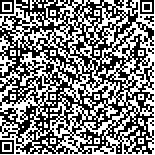章志超,刘金明,周芳,等.呼吸训练对卒中后抑郁患者自主神经功能及情绪状态的影响[J].中华物理医学与康复杂志,2020,42(5):402-406
扫码阅读全文

|
| 呼吸训练对卒中后抑郁患者自主神经功能及情绪状态的影响 |
|
| |
| DOI:10.3760/cma.j.issn.0254-1424.2020.05.005 |
| 中文关键词: 呼吸训练 卒中后抑郁 自主神经功能 临床疗效 |
| 英文关键词: Respiratory muscle training Stroke Depression Autonomic function Clinical efficacy |
| 基金项目: |
|
| 摘要点击次数: 5476 |
| 全文下载次数: 6225 |
| 中文摘要: |
| 目的 观察呼吸训练对卒中后抑郁(PSD)患者自主神经功能及情绪状态的影响。 方法 采用随机数字表法将52例PSD患者分为观察组及对照组,每组26例。对照组患者给予常规康复干预(包括药物治疗、物理因子治疗、偏瘫肢体综合训练等),观察组患者在此基础上辅以呼吸训练(包括渐进性吸气肌抗阻训练及呼吸控制训练),每天训练2次。于治疗前、治疗4周后分别采用动态心电图、汉密尔顿抑郁量表(HAMD)及改良Barthel指数(MBI)量表评估患者自主神经功能、情绪状态及日常生活活动(ADL)能力改善情况。 结果 治疗后观察组患者心率变异性(HRV)指标24 h正常R-R间期标准差(SDNN)、24 h相邻R-R间期差值均方根(RMSSD)、24 h相邻R-R间期差值>50 ms百分数(PNN50)及高频功率(HF)[分别为(128.36±8.34)ms,(15.63±3.63)ms,(8.62±2.33)%及(677.58±196.74)ms2/Hz]均较治疗前及对照组明显提高(P<0.05)。另外治疗后观察组患者HAMD评分[(12.63±10.44)分]及MBI评分[(60.44±12.72)分]亦显著优于治疗前及对照组水平(P<0.05)。 结论 在传统康复干预基础上辅以呼吸训练能进一步缓解PSD患者抑郁情绪,改善患者自主神经功能及ADL能力,该联合治疗模式值得在PSD患者中推广、应用。 |
| 英文摘要: |
| Objective To observe the effect of respiratory muscle training on autonomic function and the emotional state of persons with post-stroke depression (PSD). Methods Fifty-two PSD patients were randomly divided into an observation group and a control group, each of 26. Both groups were given routine drug therapy, physical agents therapy and comprehensive training for hemiplegia, but the observation group additionally received progressive inspiratory muscle resistance training and respiration control training twice a day. Before and after four weeks of treatment, the autonomic functioning, emotional state and the ability in the activities of daily living (ADL) in both groups was evaluated using dynamic electrocardiography, the Hamilton Depression Scale (HAMD) and the modified Barthel index (MBI). Results After the treatment, the average heart rate variability index in the observation group, the standard deviation of 24-hour R-R intervals(SDNN), the root mean square of successive differences of R-R intervals (RMSSD)and percentage of NN interval deviations greater than 50ms and the high-frequency power (HF) were all significantly higher than before the treatment and significantly higher than the control group′s averages. The average HAMD and MBI scores of the observation group were also significantly better. Conclusion Breathing training can usefully supplement traditional rehabilitation interventions to alleviate post-stroke depression. It will also improve their autonomic nerve function and ADL ability. Such combined treatment is worthy of promotion and wider clinical application. |
|
查看全文
查看/发表评论 下载PDF阅读器 |
| 关闭 |